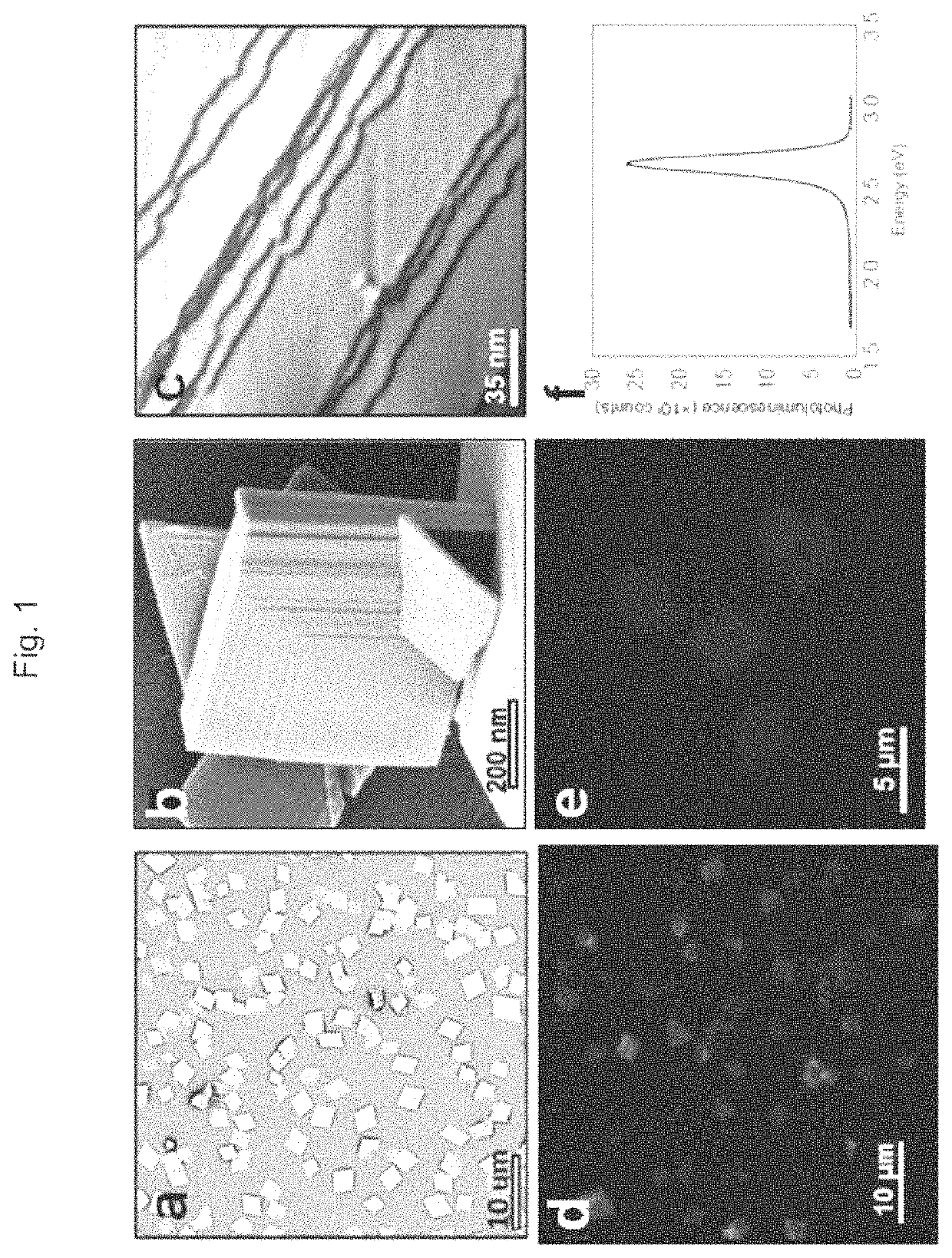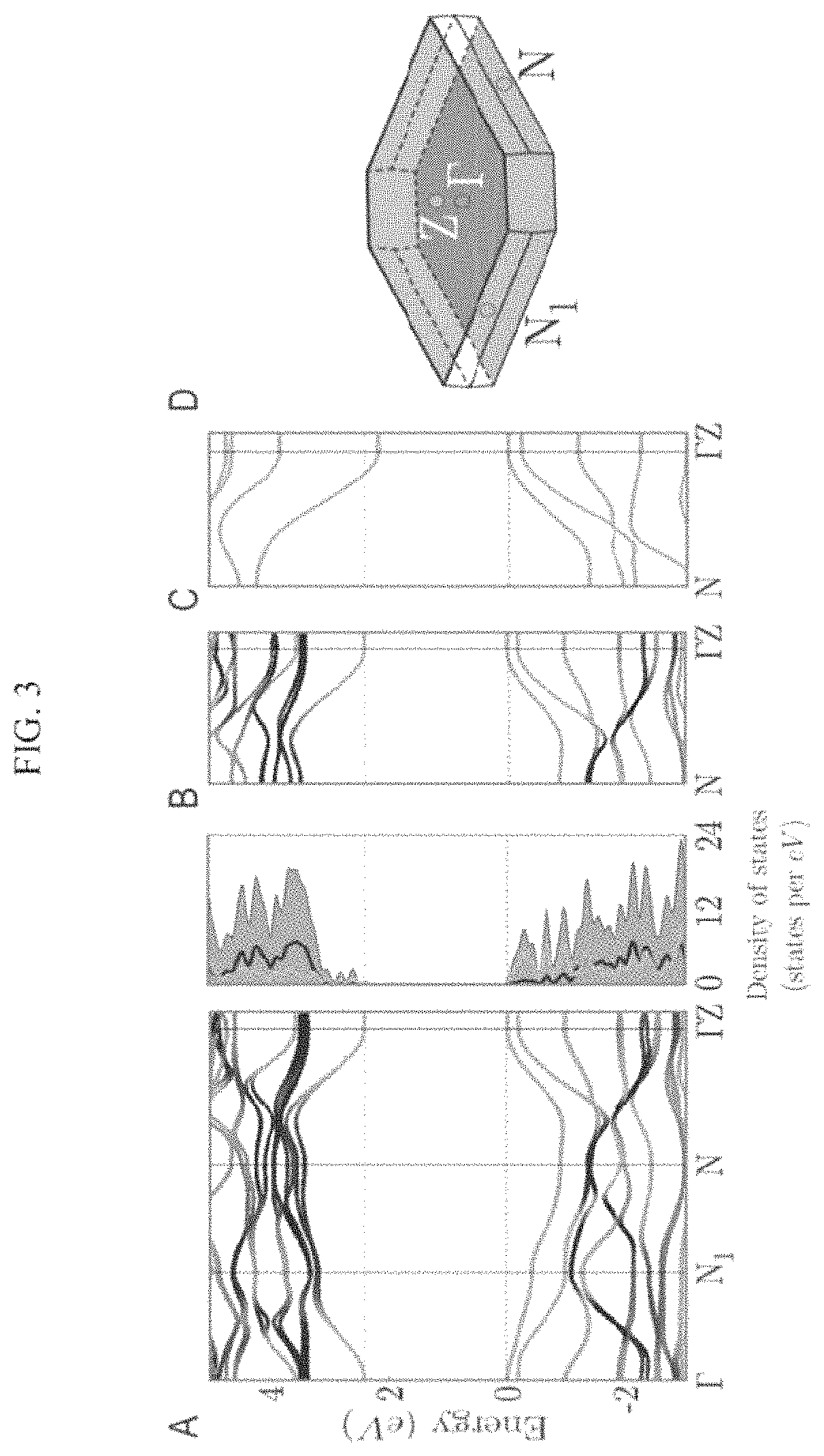Mithrene and methods of fabrication of mithrene
a technology of mithrene and mithrene, which is applied in the direction of organic compound/hydride/coordination complex catalyst, sustainable manufacturing/processing, physical/chemical process catalyst, etc., can solve the problems of complex technology for exploiting monolayers, loss of unique properties of 2d monolayers, and delicate ultrathin 2d materials, etc., to achieve simple, robust and inexpensive methods
- Summary
- Abstract
- Description
- Claims
- Application Information
AI Technical Summary
Benefits of technology
Problems solved by technology
Method used
Image
Examples
examples
[0071]General
[0072]Standard high vacuum, Schlenk line technique was employed for gram scale synthesis under dried nitrogen atmosphere. All reagents were Obtained from commercial sources including dry toluene and tetrahydrofuran and were used without further purification. The reported yields are for isolated sample. Powder X-Ray diffraction studies were performed on a Bruker AXS D8 Discover GADDS X-Ray Diffractometer, operated at 35 kV and 40 mA at a wavelength of Co Ka, 1.79 Å. Scanning electron microscopy (SEM) images were collected on a Zeiss Gemini Ultra-55 Analytical Field Emission SEM and an FEL Phenol» G1 Tabletop SEM. UV-vis and diffuse reflectance spectra were taken on an Agilent Technologies Cary-5000 UV-Vis-NIR spectrophotometer. Photoluminescence spectra were taken on an Edinburgh Instruments FL980 Spectrometer.
[0073]Samples of crystalline silver benzeneselenolate specimens were prepared by the drop casting of isopropanol suspensions onto a silicon wafer, which were allow...
PUM
| Property | Measurement | Unit |
|---|---|---|
| temperature | aaaaa | aaaaa |
| angle | aaaaa | aaaaa |
| temperature | aaaaa | aaaaa |
Abstract
Description
Claims
Application Information
 Login to View More
Login to View More - R&D
- Intellectual Property
- Life Sciences
- Materials
- Tech Scout
- Unparalleled Data Quality
- Higher Quality Content
- 60% Fewer Hallucinations
Browse by: Latest US Patents, China's latest patents, Technical Efficacy Thesaurus, Application Domain, Technology Topic, Popular Technical Reports.
© 2025 PatSnap. All rights reserved.Legal|Privacy policy|Modern Slavery Act Transparency Statement|Sitemap|About US| Contact US: help@patsnap.com



